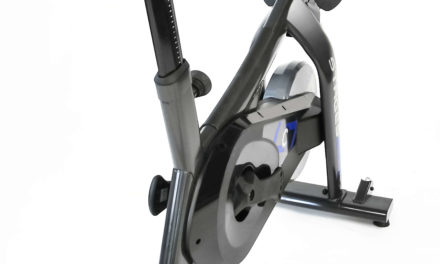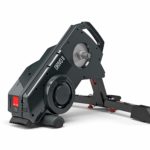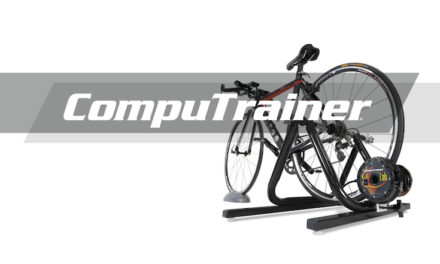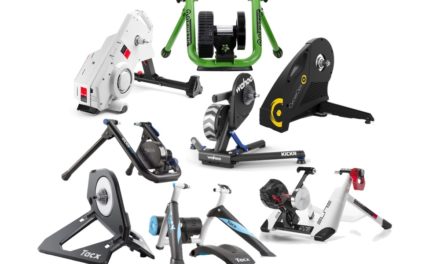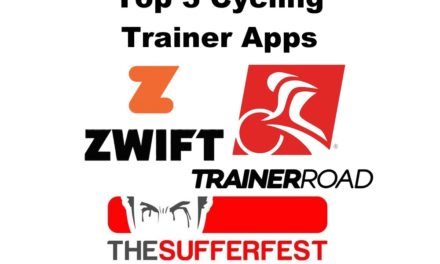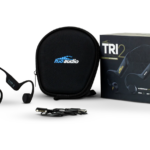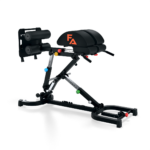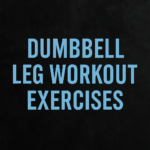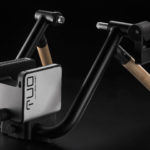
Zwift Racing and Categories
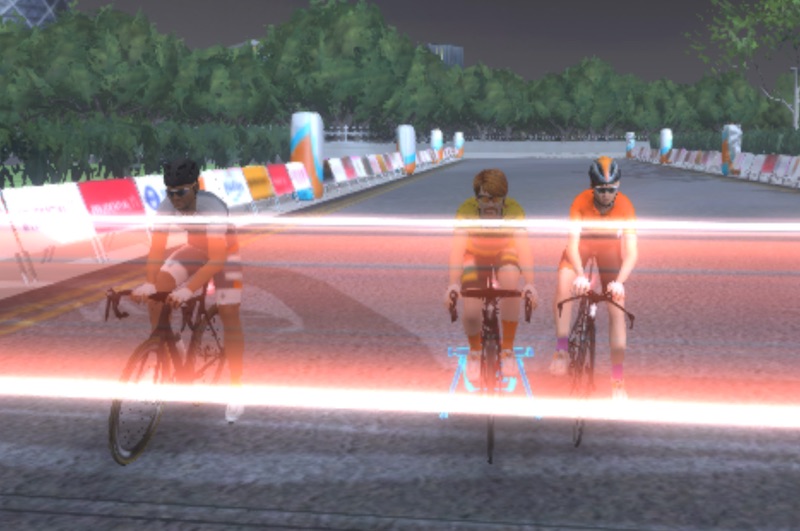
This past year I jumped onto the Zwift bandwagon and started doing a lot of my cycling training in the virtual world of Zwift’s Watopia, London and Richmond. The temps outside, even though I live in Austin, Texas, just weren’t ideal for cycling. I am more of the above 50 degrees crowd.
Both Wahoo and Tacx sent us their top of the line trainers, the Wahoo KICKR (Version 3) and the Tacx NEO. This provided a perfect opportunity to test out the trainers and virtual programs like Zwift.
One of the cool features of Zwift is the ability to race people from all around the world. In Zwift, almost on a daily basis it seems, there are at least 1 or 2 races. Signing up for a race doesn’t cost you an entry fee and you will never have to worry about crashing. You simply select your category (A, B, C or D) and wait for the race to start.

While you’re waiting, Zwift allows you to ride a virtual trainer (shown in blue) or ride the race course. My preference is to get aquatinted with the course first and then right before the race starts click the blue [Join Event] button. If you forget to click the button, don’t worry there is usually a reminder that pops up before the race starts. There is also a race count down timer, so you know how much time is left before the race start.

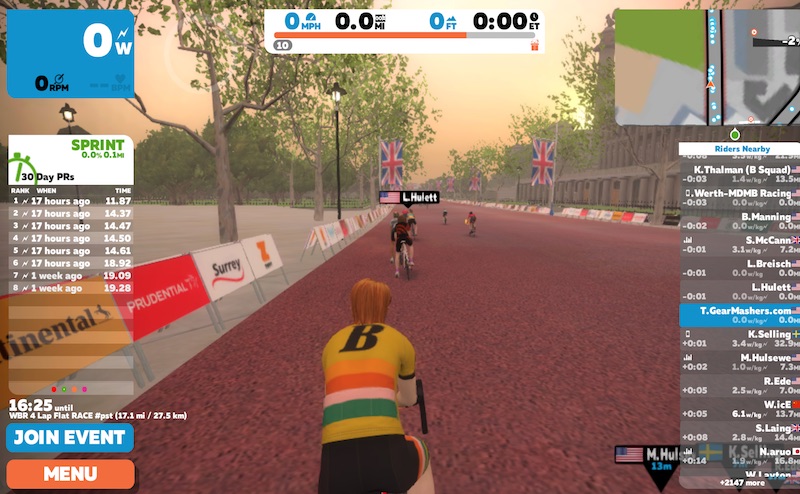
What Do The Zwift Categories Mean?
For those who race in the real world, the Zwift Categories (A, B, C, D) or Cat classification (1, 2, 3, 4, 5) don’t exactly match up and you don’t have to qualify to jump into the various categories. If you feel you’re man or women enough to race category A, the hardest category, then go for it. Just be warned that if you’re not up to the task, you’re going to get dropped rather quickly.
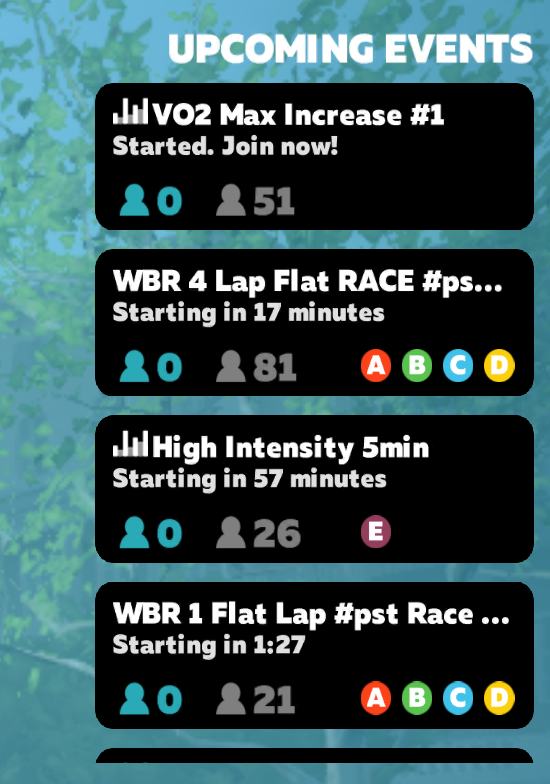
The 4 Zwift Race Categories
Zwift Categories normally fall into the following ability levels
- Category A: 4.0 w/kg FTP or higher
- Category B: 3.2 w/kg to 4.0 w/kg FTP
- Category C: 2.5 w/kg to 3.2 w/kg FTP
- Category D: Under 2.5 w/kg FTP
The W/KG numbers represent the Power to Weight ratio of (Watts per Kg) and are calculated based on the weight you entered into Zwift. A person who weighs 155 pounds or roughly 70.3068 kilograms and can average 200 watts will have a w/kg of 2.70.
Based on the categories above this person should race Category C. A person who weighs 180 pounds or roughly 81.6466 kilograms and can also average 200 watts would have a lower w/kg of 2.33 putting them into Category D.
Zwift Weight Cheating / Weight Doping
Now here is where weight cheating or “weight doping” comes into play. If you weigh 180 pounds and you enter into Zwift that you weigh 150 pounds, your w/kg will be higher. In other words your actual weight should say your output is 2.33 w/kg rather than 2.70 w/kg. I am not exactly sure how this all plays out, but needless to say, there are plenty of cheaters in Zwift.
Finding Your Zwift Race Category
In general I will race on the upper end of Category C or the lower end of Category B. As far as I am concerned Category A is for Watt Cheaters (yes people can cheat) and pure bad asses.
To Give you an idea of how fast Category A is, here is a Zwift race I did. The race consisted of a 4 lap 17.1 mile course with 1 significant hill each lap. The first place guy was averaging 472 watts or 6.1 W/KG (Watts per Kilogram of weight). I sort of find that effort suspect, but maybe it’s accurate. Considering none of the other racers were even close and almost 100 watts less, it does stick out. Obviously M.Posten was sandbagging the race because he should have been a category A rider based on his stats.
To give you an idea of an elite pro cyclists wattage, Team Sky’s Chris Froome, you know the guy who won a few Tour De France races, regularly exceeds a 30-minute power output of 419W (6.25W/kg) and for 60 minutes he would expect to ride at or above 366W (5.46W/kg). Now that is some serious watts and Chris is considered one of the top cyclists in the world, so M.Posten is either a big time Pro Cyclist or something is way off.
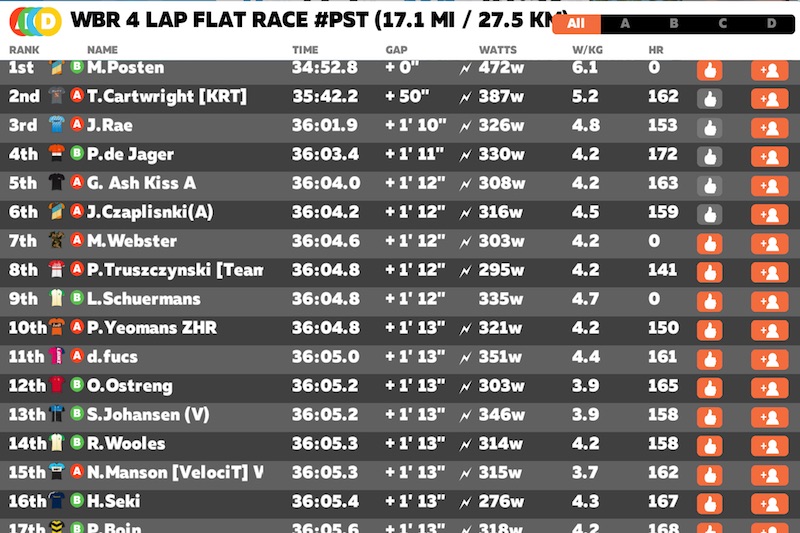
Here are my results from the same race. One thing that was a little annoying was many racers who were in the C category took off fast at the beginning and jumped into the B category pack. In normal road races, each category will have it’s own racers. So for example a Category 5 race will have Category 5 racers and not Category 1, 2, 3 and 4. In this particular race, all the categories went at the same time so you weren’t exactly sure who was who.

You also might notice that my Average Heart Rate (132) is a bit lower than all the other racers. Yeah I have a low maximum HR. The good news is my resting happens to be around 38. I have noticed over the years that my Max Average HR has come down. I do remember seeing in the upper 150’s to 160’s.
Zwift Racing Tactics
In Zwift, just like in real world cycling racing, there are tactics racers use to beat their competitors.
- Fast Start: You want to start off really fast and then settle in with a group. It reminds me of a triathlon swim start, where you want to get out quick so you can control the race. If you start out too slow you end up bunching up with slower riders and it will be harder to catch people that started fast in front of you. If you can hang in with the front group it will start to settle down and things will get a bit easier.
- Drafting: Drafting plays a huge role in Zwift Racing. It allows you to let other people do some work and will save you a ton of energy throughout the race. If you are in a big group, staying in the pack is perfect. If you’re in a small group, hanging usually 2 or 3 people back works well.
- Know the Course: It’s always best if you have ridden the course you will be racing on. This gives you insight into where the hills are and where attack points might occur.
- Use Power-ups: Zwift Power-ups can really help during a race at key times if the race allows them. My favorites are the Drafting, Aero and Feather power-ups. I will use the DRAFTING boost to make it easier when in a pack. The AERO power-up is great if you are looking to break away from a pack, riding downhill or when you are trying to catch cyclists in front of you. It is also extremely useful at the end of the race when you are sprinting to the finish. The FEATHER power-up is used to attack on a climb or hang in on a climb when those in front of you pick up the pace.
- Don’t Stop: Stopping in a Zwift race can cost you a ton of time. Make sure you have all your essentials so that you don’t need to stop. Fill those water bottles, make sure your phone is charged (If you are using the Zwift Companion App), have fans blowing and towels ready to soak up the sweat.
- Use Your Upgrades: The longer you ride on Zwift the more upgrades you will get for your bike, including faster wheel sets, faster frames and so on. Just like in the real world, if you know you have a big climb, you may opt for a less aero bike that is lighter and has lighter wheels. For a relatively flat course go with a more aero bike and aero wheels.
During the race one thing that is really important to remember is to Draft. You will certainly save a lot of energy drafting and realistically there isn’t a reason to push at the front if you can draft off of others. When breakaways occur, certainly go after them if you plan on winning, but also look to save energy by utilizing the pack.


